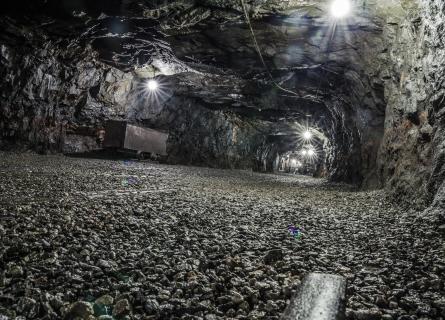
Project implementation methods in successful mining and metals investment
Industrial plant projects are often investments of tens or even hundreds of millions of euros. Getting the investment to produce within the planned time frame is naturally the owner’s primary interest. Therefore, the engineering company needs not only the technical expertise, but also the ability to meet customer goals in a flexible and timely manner.
Open and service-oriented EPCM – typical solution for Mining and Metals project implementation
EPCM (engineering, procurement, construction management) is a commonly used investment project implementation model where the EPCM supplier, i.e. the engineering contractor, does all the technical design necessary for the investment and co-ordinates the implementation with the owner. The owner’s role is to make decisions. In EPCM model engineering contractor is responsible for technical design, procurement and site control, and also supports the owner in making right-time decisions on technical solutions, equipment and equipment suppliers, building materials and contractors, and other investment-related choices throughout the project.
A good engineering contractor is an engineering company that is independent from technology suppliers, is familiar with the latest technologies in the field, and able to help the owner in choosing the most suitable solution for any specific item. An independent engineering contractor compares and combines the best unit processes of different suppliers and can utilize the latest intelligent process models in objects and incorporate them into the owner’s control systems.
From the owner’s perspective, it is important that the project management processes and information flow are transparent and the implementation highly service-oriented. Owner’s interests are guiding decision making and corrective actions are taken immediately. The owner must be able to follow the project's progress, costs, and technology choices throughout the investment life cycle. A smooth project management and the best outcome are always in the interests of both the owner and the engineering contractor.
The EPCM model is clearly more risk-free than many other implementation models, and as a whole, a less expensive option. It is also a flexible and 'open’ implementation method as the owner has full visibility to the costs and progress. Decisions and contracts are made as the project progresses, making it easier to select the best techno-economical solution for each situation at the right time. It is also a very flexible model. While the key guidelines for the investment project are already being decided in the project's development phase, in practice, refinements, changes and unexpected situations are always met during the project. When the owner is not legally tied into one EPC agreement, the agility is kept and the investor can always make appropriate changes / decisions during the process.
In EPCM implementation model, the organization is piled up specifically for the project, and the project is resourced with the best experts. It is important to remember that people are who make project a success, regardless of the way it is implemented, and that when the EPCM implementation ends, the EPCM contractor’s project staff will no longer incur any cost to the owner.
EPC model – the delivery solution locked at an early stage
Alternatively, the owner may want to purchase a larger entity. Another commonly used implementation model is EPC (engineering, procurement, construction), which means more or less a turnkey delivery. For example, the EPC model can be utilised when the investor has little or no willingness to participate in the project due to the lack of own resources. In this case, a total delivery solution is agreed, in which the process equipment supplier typically handles the entire project to execute the finished package according to the specifications agreed at an early stage.
The challenge with the EPC model is that the overall delivery scope is locked at the time of signing the contract. When an EPC contract is made, the technical information of the investment is often still inadequate and the supply content is then difficult to influence. Thus, changes to the contract and delivery content are always expensive for the owner. A good EPC agreement takes the owner's interests into account but requires a high-level professionalism. It also takes a long time to prepare such a contract. If the EPC delivery includes elements outside the supplier's core competence, the total investment price may increase as the EPC contractor always adds its’ own profit margins and risk allowances to the supply. EPC contractor can also select the sub-suppliers based on the lowest costs, in order to maximize own profit. The owner does not have visibility of the cost composition and thus any savings will benefit only the EPC contractor.
Construction is often the largest single cost element in industrial investments. Due to the EPC contractor's profit margins and risk reservations, the EPC model often costs more than the EPCM implementation. The same applies to process control and electrification. It is also essential to remember that risk reservations are included in the price of the EPC contract, even if none or only a part of the project risks are realized.
In the EPC model, the customer is tied to one delivery contract and supplier, and is no longer able to influence the design or implementation.
EPC delivery can be included in an EPCM project
In the EPCM implementation model, certain process equipment or equipment deliveries can be obtained with an EPC model, i.e. turnkey delivery, including process guarantees. In this way, the process risks of the actions can be managed easily, but the possibility for the project owner to make agile changes is maintained.
An EPCM implementation method can still include larger scopes from key suppliers, enabling the owner to benefit from the suppliers’ standardization, and simultaneously providing the suppliers a chance to direct all their energy and power into their respective core business.
Is EPCM model suitable only for major projects?
EPCM implementation is also widely used for small investment and maintenance projects. The fundamental logic is the same as in larger projects, only the scale is smaller. Small investments are often made without the important project development phases, which may then lead the project into unpleasant surprises. In the EPCM implementation these surprises are more manageable and, above all, more cost-effective to manage because the EPCM offers flexibility and agility to make changes even after the implementation decision.
EPCM project in a gold mine: case Agnico Eagle
Agnico Eagle Finland Oy is a subsidiary of the Canadian gold producer Agnico Eagle Mines Limited. It owns a Kittilä mine and is active in ore finding in Finland and other Nordic countries. The Kittilä mine is Europe's largest gold mine and mining leader in Lapland. The life cycle of the Kittilä mine is estimated to last until 2035, but according to Agnico Eagle's exploration program, exploration of the site and surrounding areas will continue.
We are currently delivering EPCM project for expansion investment for the Kittilä gold mine. The assignment includes services for the gold mine expansion project that will be carried out between 2018 and 2021.
"The shaft will make it possible to utilize the deeper parts of the gold deposit in an economically sensible way, and it will improve our energy efficiency, as well as decrease our emissions. The efficiency advantage of the shaft combined with the raised production rate will improve the competitiveness of the Kittilä mine. We selected AFRY as our strategic partner to the largest ever expansion project in Kittilä mine based on our successful long term relationship in various demanding projects at the mine," says Agnico Eagle Finland's Managing Director, Jani Lösönen.
We have been running several successful EPCM projects at Agnico Eagle's Kittilä mines. One of the biggest investments in gold production capacity expansion ended in 2014, with the following achievements:
- Budget underruns
- Project schedule was kept accurate
- Top safety; no serious accidents
- Planned production capacity was reached.
Our role in the project was the entire EPCM delivery, which covered all aspects of design, safety services, procurement, site supervision and start up support. Close cooperation with the client in project management and decision making enabled the project to remain on schedule and on budget.
“An important factor in the success of the project was the good co-operation with us and AFRY. EPCM as an implementation method gives us the flexibility to make decisions in a timely manner as the planning progresses,” says Antti Korhonen, Project Manager, Agnico Eagle Kittilä mine.





